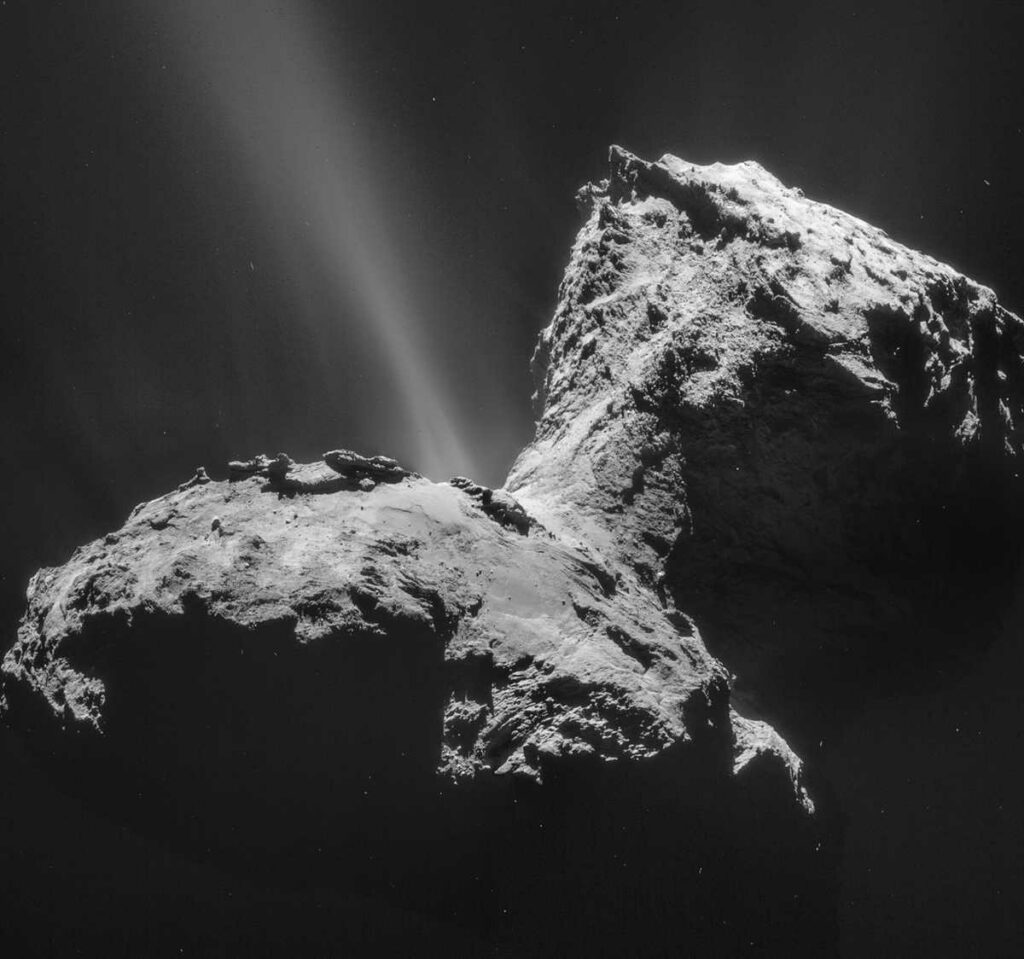A team at the Southwest Research Institute (SwRI) has spotted the first comet we’ve ever seen to create an aurora in the ultraviolet spectrum.

On Earth, auroras (or ‘polar lights’) are created when charged particles from the Sun hit those in our planet’s atmosphere. They form at the poles because that’s where the Earth’s magnetic field is weakest, allowing such particles to reach the atmosphere.
The discovery of a similar phenomena on a comet, bodies that lack our planet’s magnetic field, has researchers understandably excited.
A space first
“Charged particles from the Sun streaming towards the comet in the solar wind interact with the gas surrounding the comet’s icy, dusty nucleus and create the auroras,” said SwRI Vice President Dr. Jim Burch, in charge of the Ion and Electron Sensor (IES) instrument on board of the craft, in a statement.
“The IES instrument detected the electrons that caused the aurora.”
The IES is installed aboard the European Space Agency’s Rosetta spacecraft, which was launched back in 2004 and whose mission ended in 2016. Together with Philae, its lander module, Rosetta was the first of our probes to fly alongside a frozen comet (67P/Churyumov–Gerasimenko) as it hurdled towards the Sun, observing how it behaved along the way.
Now, data from Rosetta has revealed ultraviolet auroras around 67P, the first ever seen on a comet. These auroras are produced by charged particles interacting with the ‘coma’, the bubble of gas that is created from and encases the comet. This interaction excites the gases enough to make them glow in ultraviolet (UV) light.
Dr. Joel Parker, a member of SwRI who handled data from the Alice far-ultraviolet (FUV) spectrograph on Rosetta, recounts that at first, the team believed they were seeing 67P’s ‘dayglow’, a well-documented phenomenon created by this bubble of gas interacting with photons (light). But they soon realized that this wasn’t the case.
“We were amazed to discover that the UV emissions are aurora, driven not by photons, but by electrons in the solar wind that break apart water and other molecules in the coma and have been accelerated in the comet’s nearby environment,” he explains.”The resulting excited atoms make this distinctive light.”
The findings show that its possible for auroras to form around comets, despite their lack of a magnetic envelope. The techniques developed by the team to integrate data from several devices and discover these auroras can serve us to find similar phenomena on other comets in the future.
The findings will been published in the journal Nature Astronomy.









